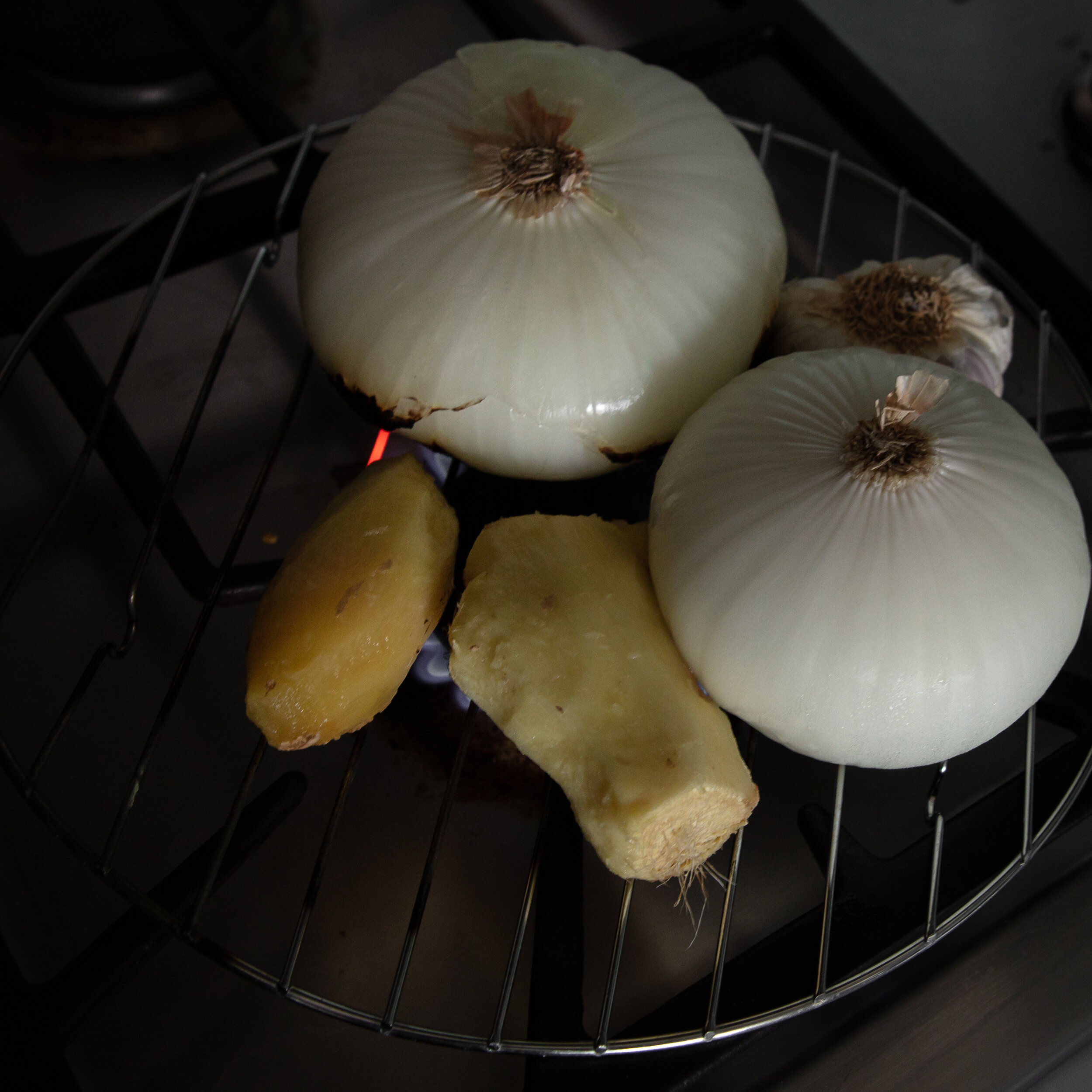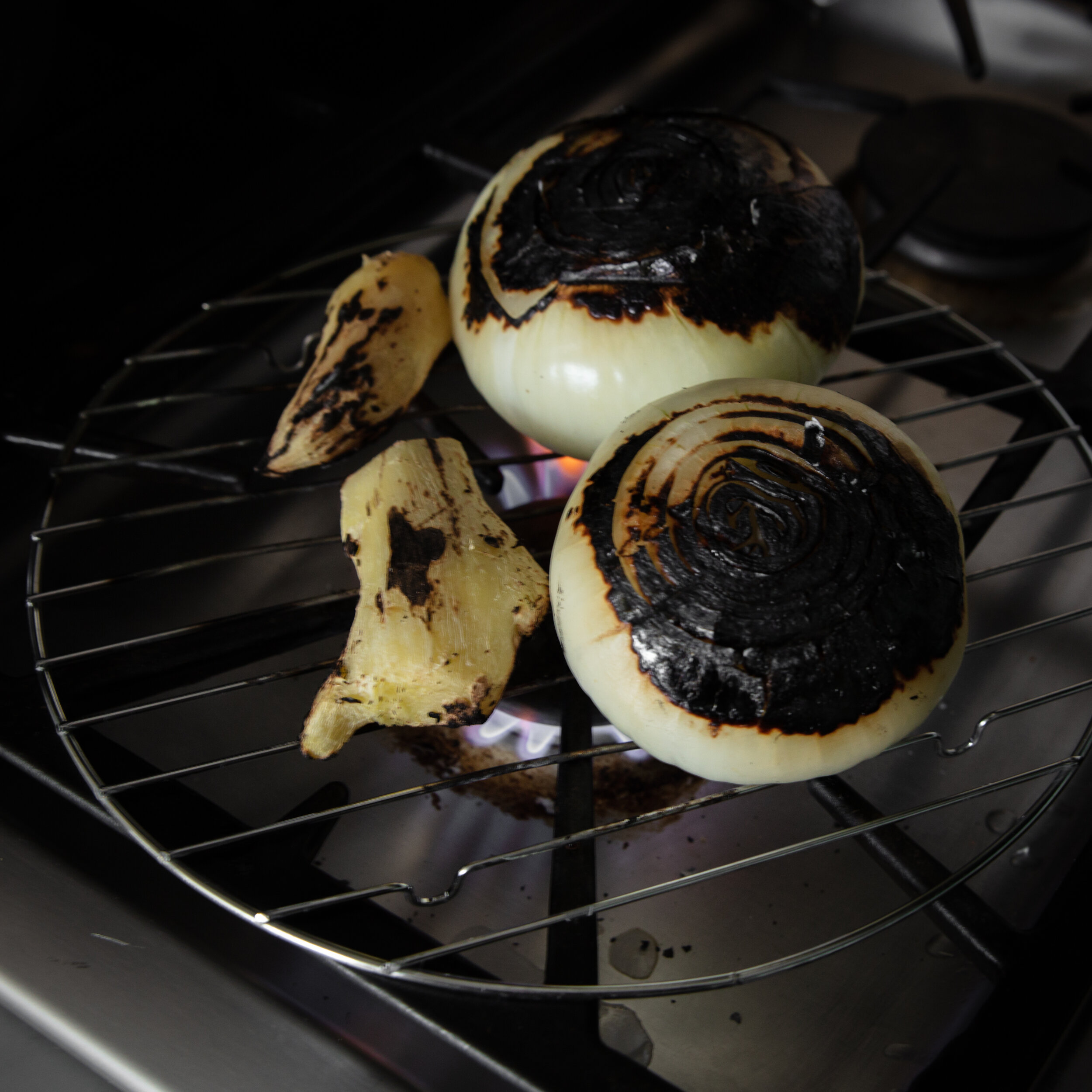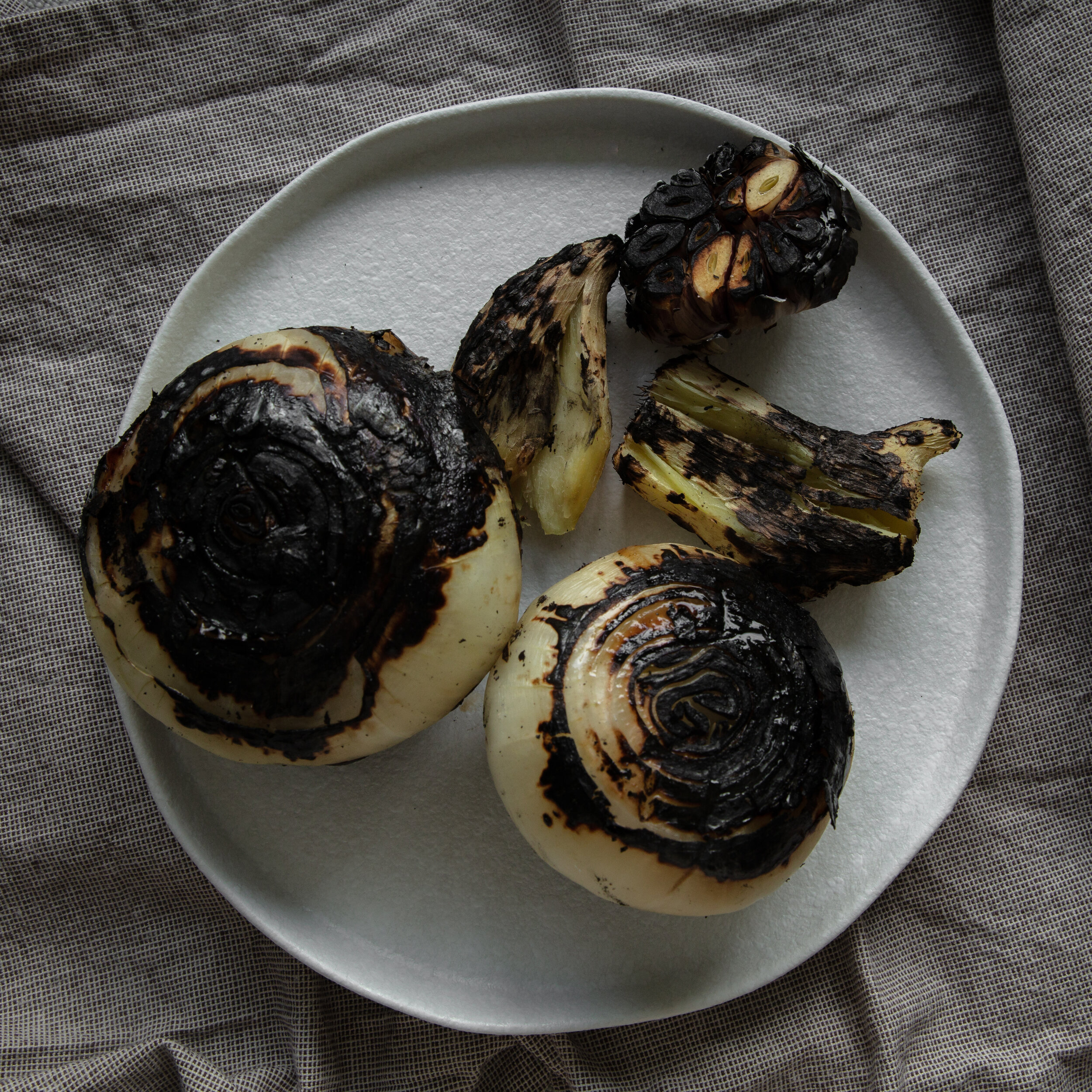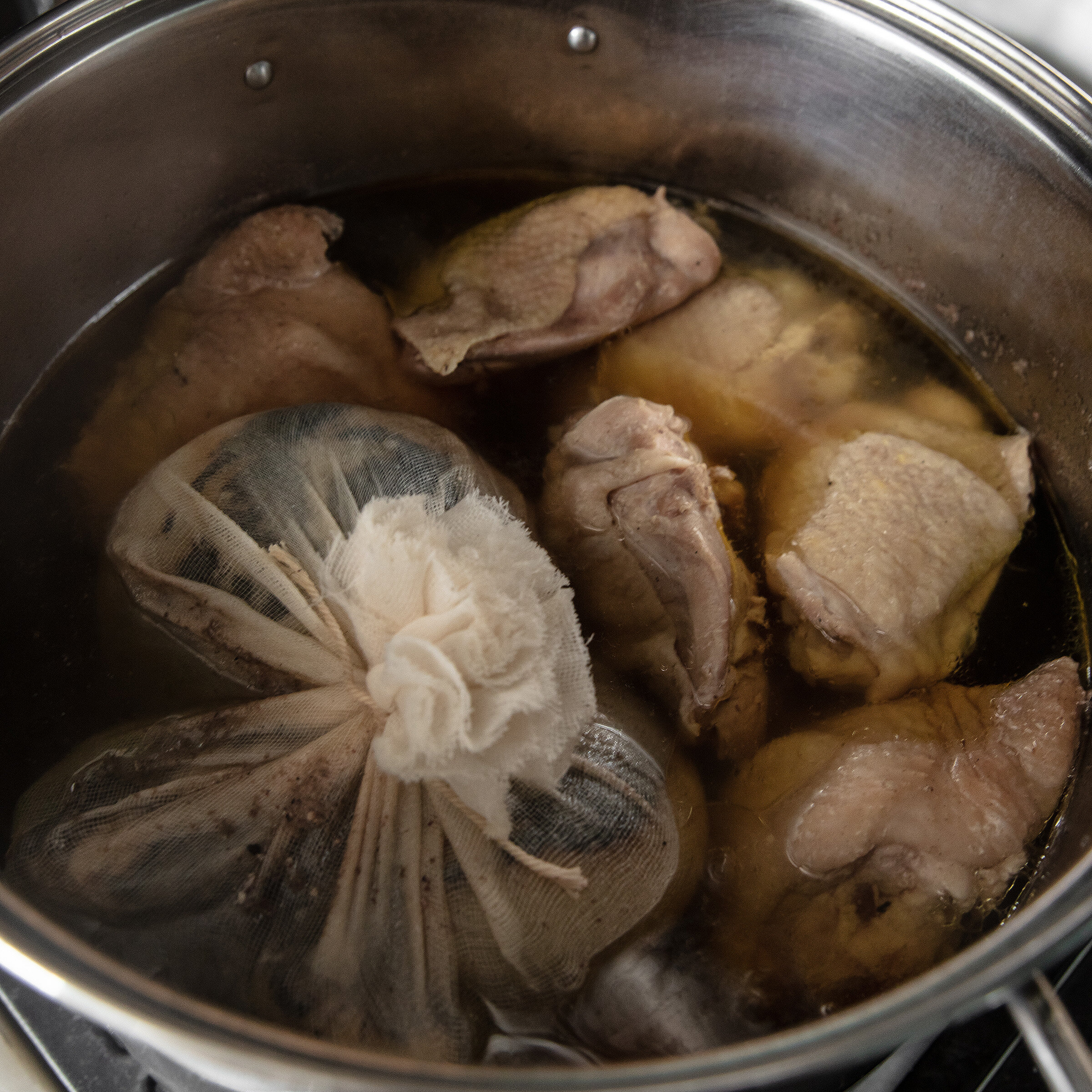In Vietnamese culture, you have your everyday meals and your special meals. Everyday meals are easy, ‘throw it together’ dishes that are uncomplicated, comforting, and made for weekly rotation. This particular soup (soups are commonly known as a ‘canh’ in Vietnamese), is one of my absolute favorites for the ‘everyday’ category, and something that I’ve been cooking for the longest time. It’s so ridiculously easy (like most Vietnamese soup/canhs are), and though usually eaten with rice, can also be eaten alone. The only thing different from the way I make mine (as opposed to my parents) is that I purchase the pre-cut pork spare ribs at my local H-mart, so that I don’t have to deal with cleaving my own meat, which I find time consuming, and messy (yes, this is a shortcut!). If you don’t like to deal with bones, I recommend purchasing a pound of pork shoulder, and cutting the meat into cubes. Avoid pork loin, as it can be dry and less juicy in this soup form. I also typically brown the pork spare ribs in a separate pan before placing it in the pot. It gives the meat color and some added texture, but this step is not necessary, and can actually be skipped if you want to cut down on time. I will say that in the past, I gave everyone a general idea of how to make this soup (blame my parents for never measuring anything, ever), however, this time around, I made sure to write down specific measurements for each ingredient so that you have a consistent result each time you make it. The result: a savory soup, packed full of flavor, with mouthwatering, almost ‘fall off the bone’ pork spare ribs. I hope you enjoy this everyday meal as much as I do.
TOFU, TOMATOES, AND PORK SPARE RIB SOUP / CANH
Degree of difficulty: 1 (on a scale of 1-5)
Preparation time 15 min
Cooking time: 2 hours
YOU’LL NEED
A 5.5 quart pot
A non-stick frying pan
INGREDIENTS
6 tomatoes on the vine, quartered
1 x 16 oz package of organic firm tofu, sliced into roughly ½ thick x 1” wide x 1.5” long pieces
1.5 lbs pre-cut spork spare ribs, rinsed, and patted dry
13 cups of water
1 TBS chicken stock powder
2 tsp salt
2.5 TBS fish sauce
¼ cup thiny sliced scallions
¼ cup roughly chopped cilantro
Freshly ground pepper
DIRECTIONS
**Before you begin, place your pork rib bones in a strainer, and gently scrub all the bones with sea salt. Rinse off all of the salt thoroughly. This removes the ‘porky’ flavor, for a better flavor profile.
Add a couple of tablespoons of cooking oil to a frying pan on med-high heat. Brown each side of the pork spare ribs (this step can be skipped if you are short on time).
Add the pork spare ribs to a 5.5 qt stockpot, and add 13 cups of hot water. Bring to a boil.
After the water has come to a full boil, reduce to medium-low, add 2 teaspoons of salt and 1 TBS of chicken stock powder. Allow the soft simmer to build the broth base for 2 hours. During the simmer time (after about an hour of simmering), gently skim the scud from the surface until the broth is clear of any impurities that have risen to the top, and continue to do so until the surface is free of impurities.
Once you have finished simmering for two hours, add in your 2.5 TBS of fish sauce. Then add in your sliced tofu chunks and your quartered tomatoes. Bring the heat back up to a gentle boil, and then reduce again to medium-low (a gentle simmer), and cook for an additional 20 minutes.
After the tofu and tomatoes have been stewing for 20 minutes, turn off the heat. Taste the broth and add additional salt or fish sauce, only if necessary.
Top generously with sliced scallions, chopped cilantro, and freshly ground pepper. Serve with fluffy jasmine rice, or eat alone as a soup.







